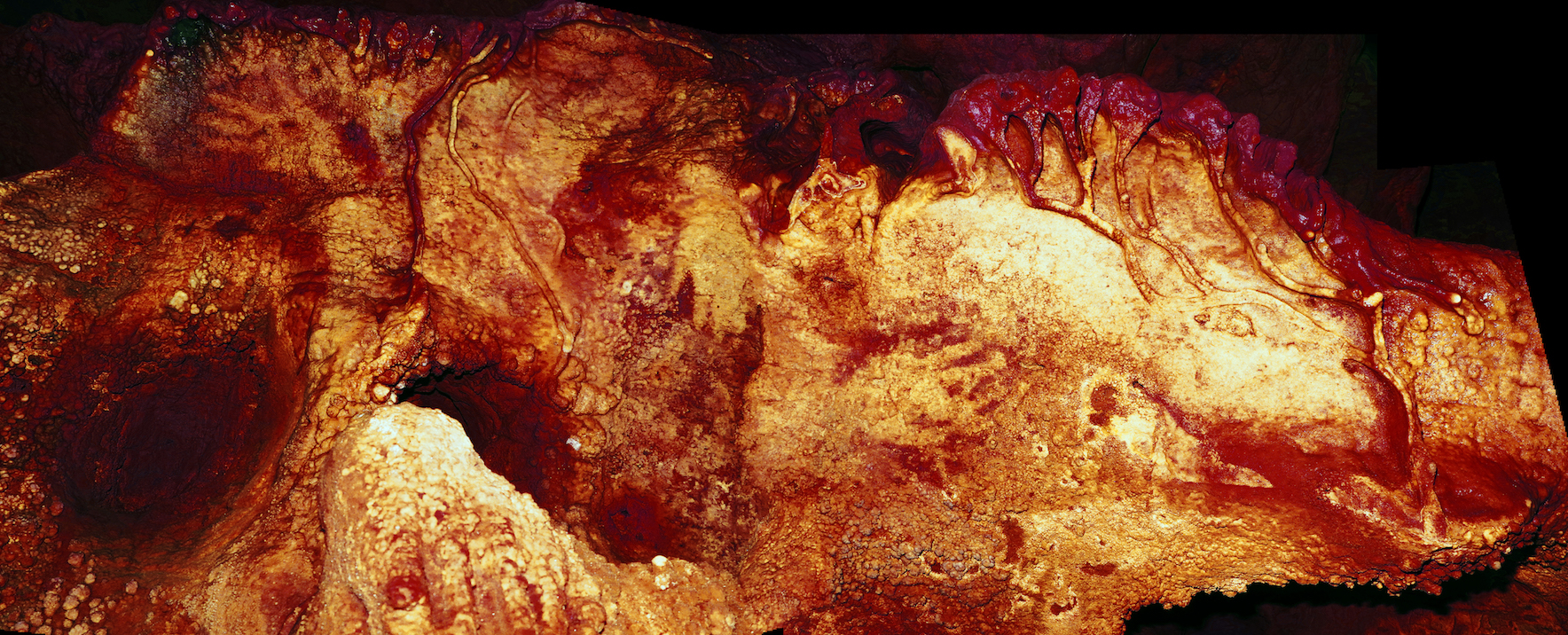
Neanderthals, not humans, were responsible for the first cave art
For many years, it was believed that humans – not Neanderthals – were the creators of the world’s oldest known cave paintings. Now, a new study led by the University of Southampton and the Max Planck Institute for Evolutionary Anthropology has found that paintings in three caves in Spain were created over 64,000 years ago. That would place their origin roughly 20,000 years before modern humans even arrived in Europe.
Until these findings came to light, all discovered cave art was solely attributed to modern humans. However, imprecise dating techniques (specifically radiocarbon dating) have hampered scientists’ ability to produce reliable results. New uranium-thorium dating techniques provide much more accurate results, and can give a minimum age for the carbonate deposits that build up on top of cave paintings.
The study, published in the journal Science, shows how an international team of scientists used these state-of-the-art techniques to discover that the age of the paintings actually date close to 64,000 years-old. “This is an incredibly exciting discovery which suggests Neanderthals were much more sophisticated than is popularly believed,” says Chris Standish, an archaeologist at the University of Southampton and joint lead author of the study.
The team of researchers from the UK, Spain, France, and Germany analyzed more than 60 carbonate samples from three cave sites in Spain. All three caves are home to red (ochre) or black paintings of groups of animals, dots, and geometric signs, along with hand stencils, handprints, and engravings. The authors believe that creating this cave art must have involved sophisticated behavior such as the choosing of a location, mixing of pigments, and planning of light source.
“Soon after the discovery of the first of their fossils in the 19th century, Neanderthals were portrayed as brutish and uncultured, incapable of art and symbolic behavior, and some of these views persist today,” says Alistair Pike, professor of Archaeological Sciences at the University of Southampton and co-director of the study. “The issue of just how human-like Neanderthals behaved is a hotly debated issue. Our findings will make a significant contribution to that debate.”
But this discovery may go beyond art. Dirk Hoffman of the Max Planck Institute for Evolutionary Anthropology – a joint lead author on the study – adds that symbolic material culture, which is the collection of cultural and intellectual achievements handed down from generation to generation, was formerly only ever attributed to homo sapiens.
“The emergence of symbolic material culture represents a fundamental threshold in the evolution of humankind. It is one of the main pillars of what makes us human,” says Hoffman. “Artifacts whose functional value lies not so much in their practical but rather in their symbolic use are proxies for fundamental aspects of human cognition as we know it.”
These findings change the way scientists will now think about our early ancestors. “Neanderthals created meaningful symbols in meaningful places,” says Paul Pettitt, a study co-author of Durham University. “The art is not a one-off accident.”
—
By Connor Ertz, Earth.com Staff Writer
Image Credit: H. Collado













